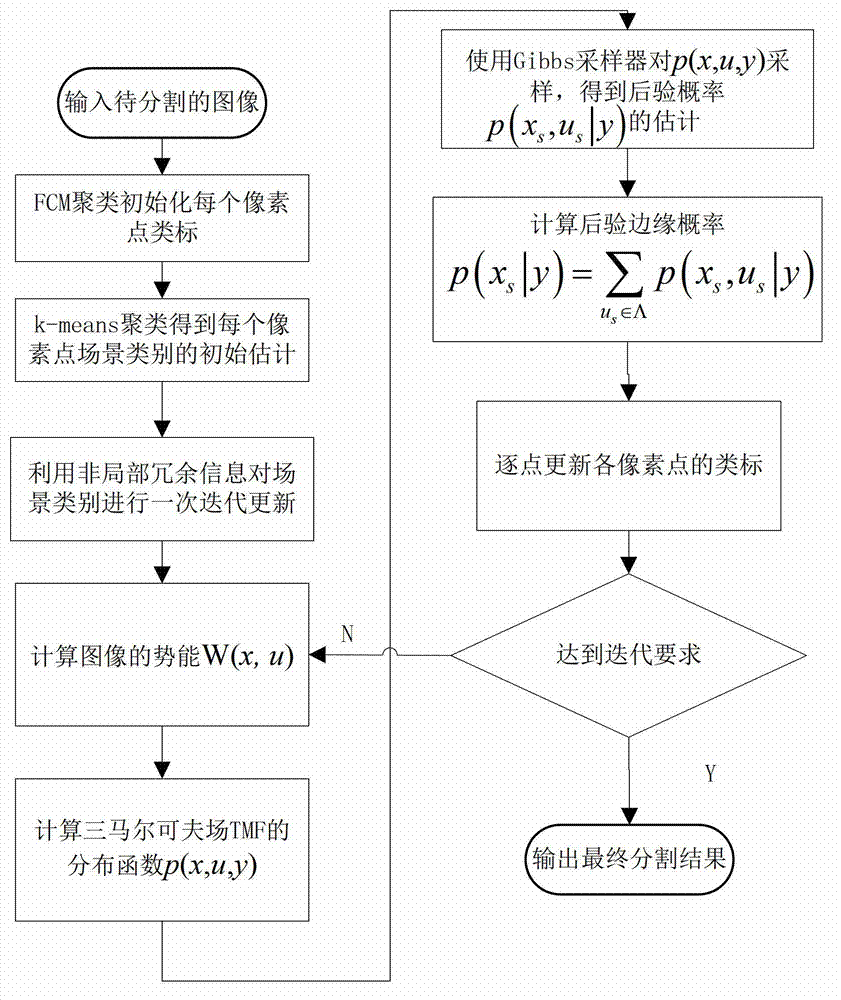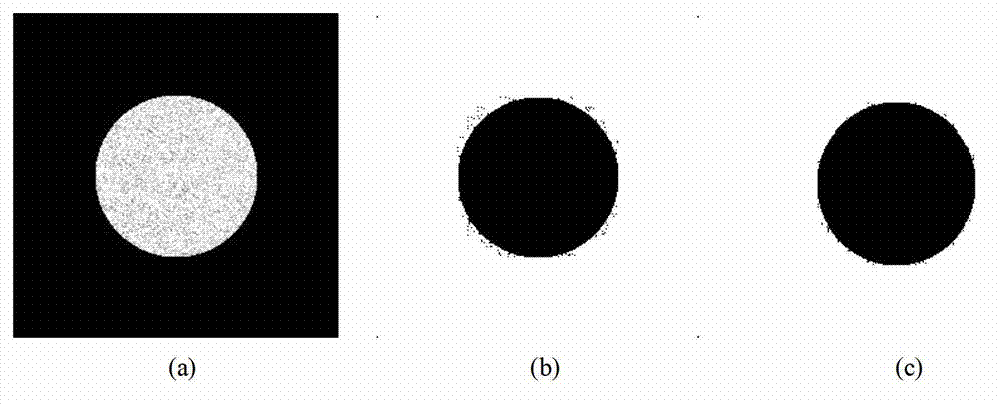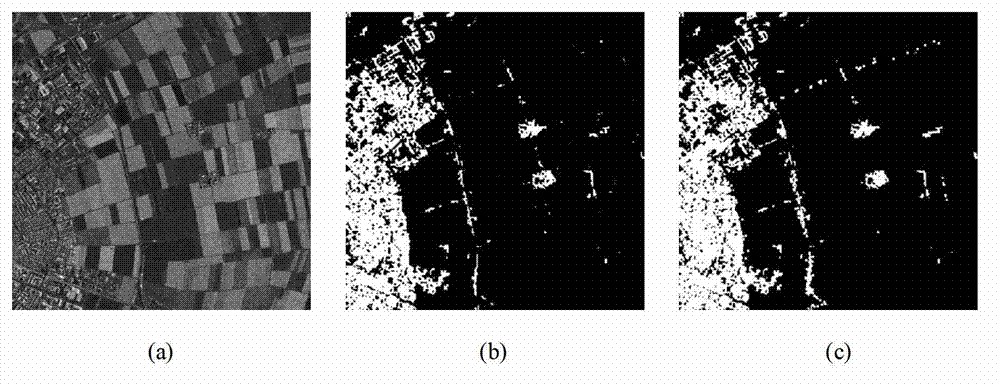Non-local-based triple Markov random field synthetic aperture radar (SAR) image segmentation method
An image segmentation, non-local technology, applied in the field of target recognition, can solve problems such as insufficient utilization of image context information, loss of image detail information and edges, and consistency of SAR image mis-segmented areas
- Summary
- Abstract
- Description
- Claims
- Application Information
AI Technical Summary
Problems solved by technology
Method used
Image
Examples
Embodiment Construction
[0033] refer to figure 1 , the implementation steps of the present invention are as follows:
[0034] Step 1: Input the SAR image to be segmented, the size of the image is M*N, the number of views is n, and the image contains targets such as farmland, water area, forest, town, and mountain.
[0035] Step 2, using the FCM clustering method to obtain the initial class label of each pixel of the image to be segmented.
[0036] FCM clustering is performed on the SAR image to be segmented, and each pixel belongs to each category with different degrees of membership. After iterative optimization, each pixel is assigned to the class with the highest degree of membership, and the initial class label of each pixel in the image is obtained.
[0037] Step 3, extract the gray level co-occurrence matrix of the image to be segmented, use the k-means clustering method to obtain the scene category of each pixel of the image to be segmented, and use the non-local redundant information of the...
PUM
 Login to View More
Login to View More Abstract
Description
Claims
Application Information
 Login to View More
Login to View More - R&D
- Intellectual Property
- Life Sciences
- Materials
- Tech Scout
- Unparalleled Data Quality
- Higher Quality Content
- 60% Fewer Hallucinations
Browse by: Latest US Patents, China's latest patents, Technical Efficacy Thesaurus, Application Domain, Technology Topic, Popular Technical Reports.
© 2025 PatSnap. All rights reserved.Legal|Privacy policy|Modern Slavery Act Transparency Statement|Sitemap|About US| Contact US: help@patsnap.com



